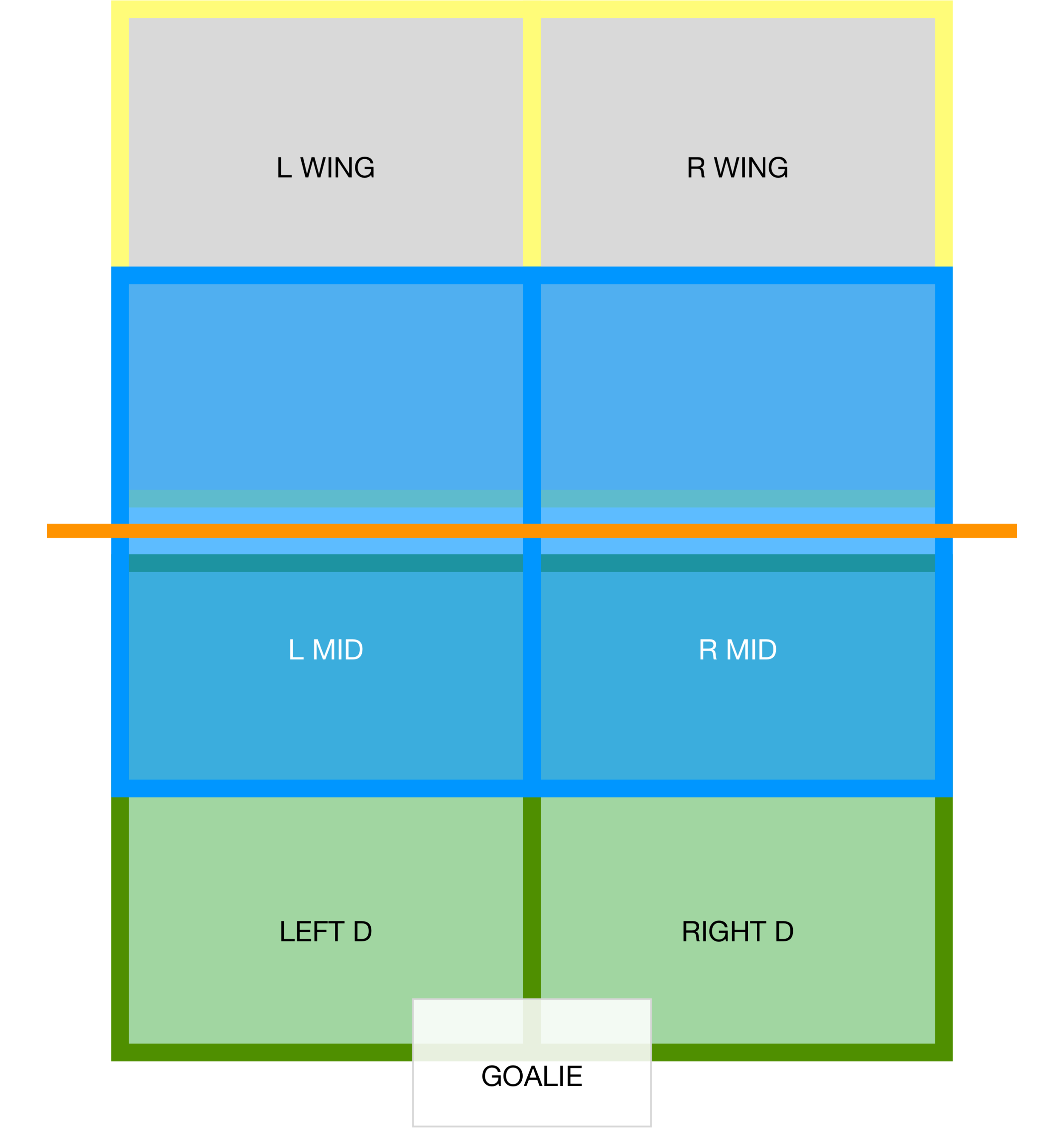7v7 Soccer Field Strategy
Note: I realize the terms “sweeper” and “stopper” used below may seem dated to some. Nevertheless, the 7v7 strategies remain valid.
Field strategies are most effective when the coach spends fifteen minutes at a full-field practice outlining (with cones) and placing every player in a rectangle that covers each overlapping position. Showing kids their entire area (their rectangle) of responsibility prior to a game helps you to set an expectation for attacking and defending (by position) during a game. Move the ball (by hand) all around the field and ask every player to move to the place in their coverage rectangle where you expect them to be as the ball moves around the field.
Pertaining to field strategy, the most important flashcard is ABM (Always Be Moving). Soccer is a sport where players rarely stand still. Coach your players to Alway Be Moving to the best place in their coverage area to receive or to intercept a pass. With a smile and a big voice, I tell players "If you're standing still, you're probably doing something wrong; there's always a smarter place to be."
Field strategies have to be somewhat dynamic. Against a weaker opponent, your entire team will unconsciously press up and attack, and against a strong opponent, your entire team will retreat into a defensive stance. Try teaching the concept of 'shape'. When I ask players to Hold Your Shape (HYS), I tell them that no matter how small the field gets, as everyone converges toward the net (on either end), trust your teammates, hold the basic shape of the formation, and then quickly return to your assigned coverage area as the field re-expands.
Here are some suggestions for positioning your players on the field during a game.
Definitions
Maturing Players: kick without thinking and struggle with passing.
Skill Players: the strongest players on the team.
Stopper: whenever possible, stops the ball at midfield / overlaps with the sweeper.
Sweeper: sweeps the ball away from the net; when under pressure, ejects the ball from the field.
Suggestions
Place maturing players into positions where they can succeed. We often put maturing players where they are either 1) sandwiched between two skill players, or 2) on the wing positions, and 3) rarely on defense unless they are highly capable of clearing the ball up the sidelines and/or with smartly ejecting the ball out of the field of play.
During practice, use cones to show the entire size and shape of each area of responsibility.
On the diagrams below, areas of responsibility overlap; make sure to remind players of their overlapping responsibilities.
Priority Defense
This is a great formation to use when you feel that your team might be overwhelmed by an opponent. In this formation, defensive players rarely cross midfield, and the center’s primary responsibility is defense. When the center does move up to attack, you also need at least one wing that can score.
Priority Offense
This is a great, aggressive formation for teams that have more skill players than maturing players. Place your strongest skill players on defense and allow them to play up and attack like midfielders. Put the least developed player into the sweeper position, but behind a solid stopper.
Priority Center
For when you only have 2-3 skill players available.
Notice the five positions stacked in the middle.
The center is the most important player on the field.
The sweeper is the second strongest player on the field, and the primary defender.
Maturing players are sandwiched between skill players.
If you have a third skill player, place him or her at striker.
The 2-2-2
The 2-2-2 is probably the most common 7v7 positioning strategy.
Pros: easy to teach, and easy for the kids to move the ball up the field vertically.
Cons: without the center players (center-mid, stopper, striker, or sweeper) used in the formations above, passing triangles are less likely to form, and triangles lead to controlling possession and to more scoring opportunities.



